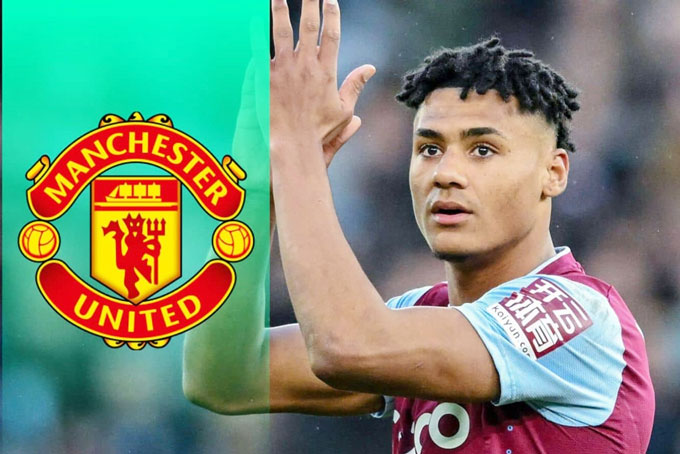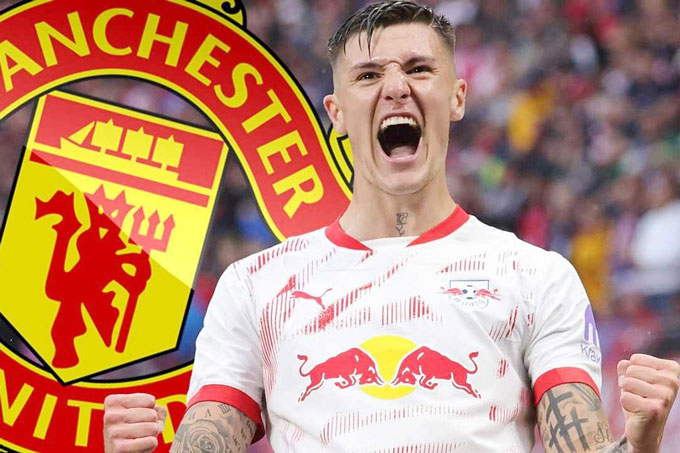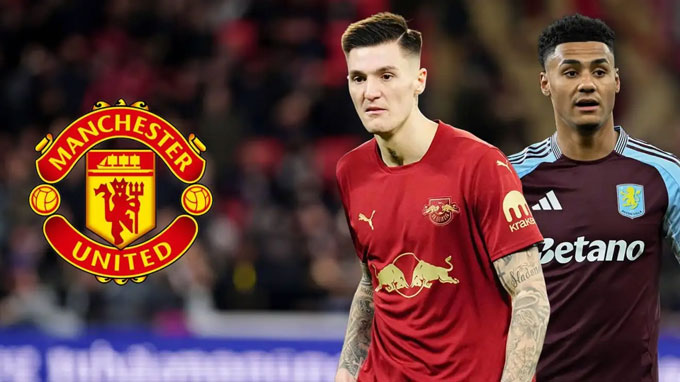After weeks of screening, MU has shortened the list of strikers down and two names: Benjamin Sesko and Ollie Watkins. The problem of MU is no longer looking for the right person, but choosing the right person for the revival project under the new coach Ruben Amorim.
Watkins, the “safe” plan with 60 million pounds
Ollie Watkins had 5 consecutive seasons scoring 10 or more goals in the Premier League in Aston Villa shirt. He is a modern center model, with speed, ability to override, read situations, intelligent pressing, can move wide, finish with both legs and especially stability, which the current MU strikers are missing.
Last season, Watkins scored 16 goals and had 8 assists after 38 matches, contributing to bringing Villa to the 6th position. This highlights his effectiveness and pressure.
He is not only a key goalscorer but also a player who connects the whole team, has the ability to adapt to many different squad diagrams. Under a high -intensity coach and high pressing like Amorim, the British striker can immediately become a key factor.
Theoretically, Watkins is an ideal contract with the philosophy of buying experienced players in the Premier League that Ineos and Amorim are pursuing. The success of the world's harshest tournament allows him to integrate almost immediately in the new squad, especially in a season that MU will not have a long -term testing time.
However, at the age of 29, Watkins is no longer a profitable investment. Aston Villa rejected a big offer from Arsenal in January, and although they asserted that there was no intention of selling, MU believed that it could close the price ranging from 40 to 45 million pounds – lower than the number of 60 million that Villa once asked. However, if buying Watkins, MU must accept trade -off: Effective immediately, but there is no potential for resale.
Sesko, a strategic gambling
Contrary to the safety of Watkins, Benjamin Sesko is a long -term investment plan but potentially risky. The 22 -year -old Slovenian striker, possessing the ideal bodybuilding (1m95), has the ability to finish well with both legs and air, and have the speed and technique necessary to play deep or independent of war.
Last season at the Bundesliga, Sesko scored 13 goals in 33 matches for RB Leipzig. Although this is not an impressive figure, what makes many big clubs, including MU, Arsenal and Newcastle, is persuasive in his development potential and modern style.
RB Leipzig installed the underground terms in the contract: If a big club accepts to spend about 70 to 78 million pounds, they will not stop Sesko. Arsenal followed this player before turning to Viktor Gyokeres, and Newcastle now sees Sesko as a top priority if he has to sell Alexander Isak to Liverpool.
MU has been pursuing Sesko since he was still wearing a Domzale at the age of 16. Recruitment Director Christopher Vivell also worked at Salzburg and Leipzig (Sesko's old teams), so he understood the potential and personality of this striker.
Another plus point is that if developed in the right direction, Sesko can become a great value asset in the future, consistent with the sustainable financial orientation that Ineos aims to.
The problem here is that MU has enough patience to develop a “material” like Sesko, in the context of the pressure of achievement and the club needs to return to the top 4 next season? If you choose Sesko, MU may have a “new Haaland” but also at risk of receiving a talent that is not as big as Rasmus Hojlund.
Need to use, or long -term investment?
The story between Watkins and Sesko is an option between two strategies: short -term and long -term. Watkins is consistent with the requirement of “need immediately”, not wasting time to integrate, in accordance with the Premier League intensity, can kick with Hojlund or lead independent attack. In terms of safety, British strikers are a reliable plan.
In contrast, Benjamin Sesko is investment in the future. He is younger than 4 years old, possessing an ideal technical and physical qualities for modern football, and especially has the ability to make a big breakthrough in the next few years if it is properly trained.
Choosing Sesko will be a message that MU is willing to patiently build a striker for the future like the way they have bet on Cristiano Ronaldo at the beginning.
With MU not competing for the Champions League next season, the competitive pressure in the European arena is somewhat reduced and that opens up the opportunity for Sesko to develop without being considered as strict as in other teams.
Financially, the difference between 10 million pounds between the two deals is not too big, but the important thing is that: Sesko will not wait for MU for too long. The provision of liberation takes effect until the end of July and if not acting early, the Red Devils may lose him into another team.
With a rejuvenating squad and need stability to create a long -term foundation, Sesko is an investment choice. But if the goal is to regain its position next season, Watkins is the ideal piece to support Hojlund, and divide the fire with satellites like Bruno Fernandes, Mathus Cuha and Bryan Mbeumo.
Watkins represents the present: Effective, easy to integrate, suitable for the tournament. Sesko represents the expectation: A rough gem needs to be honed, but can bring profits both on the pitch and the transfer market.
Ruben Amorim is facing an option not only for expertise, but also shaping MU's long -term development strategy. Will he choose the safety to create a short -term success, or bet on the future with an unproven name? The answer can decide the success or failure of the Amorim dynasty at Old Trafford.
If you want to buy anyone, you need to sell first
Regardless of the choice of Watkins or Sesko, MU will face the pressure to liquidate the squad and strict financial management. Despite pushing Marcus Rashford to Barca on loan to reduce the pressure of the salary fund, the transfer budget of the team is still very limited. To recruit Sesko or Watkins, MU will need to sell people first. Players like Alejandro Garnacho, Antony, Tyrell Malacia or even Rasmus Hojlund are considered to be transferred to the transfer market. In particular, Garnacho and Antony are the two names that can earn the most money, and Jadon Sancho is being closely monitored by Borussia Dortmund and Juventus.




